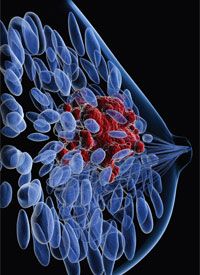First Multilingual App for Breast Exam Aims to Improve Early Cancer Detection
Pink Luminous Advocacy Project's Breast Awareness app is the first multilingual, unisex breast self-examination application.
breast cancer

In May, the Pink Luminous Advocacy Project introduced the Breast Awareness app, the first multilingual, unisex breast self-examination application. Although the nonprofit Pink Luminous organization is tasked with supporting breast health in underprivileged communities, CEO Marilyn Dans maintains that the app is meant to encourage self-examinations across the population.
“In all the places we’ve gone and the women we’ve talked to, women feel uncomfortable with breast self-examination, so the app makes it easier,” she said in an interview with Oncology Fellows. “[The app] is trying make self-examination really simple, trying to educate and empower individuals to live an awareness lifestyle, to embrace the awareness lifestyle, to make it part of their routine.”
According to an analysis of the Surveillance, Epidemiology, and End Results database, the incidence of breast cancer with distant involvement at diagnosis increased by 2.07% annually in women aged 25 to 39 years from 1976 to 2009. Over the study period, the increased incidence was particularly acute among black (annual percentage change, 3.50%) and Latinx women (annual percentage change, 2.67%).1
Dans said that an increase in diagnoses among younger women, whose mammograms often are not covered by insurance, inspired Pink Luminous to develop an app to assist these women in particular and, more generally, anyone at risk for breast cancer. The idea was to create something to walk these men and women through a self-exam.
The Pink Luminous Advocacy Project supports and promotes breast cancer awareness in places where education and, specifically, medical education are limited. The organization’s ultimate goal is to “save lives at a global scale by offering educational tools focused on increasing breast health awareness.”
The app presents instructions for self-examination, similar to recommendations from the American Cancer Society, in both text and voice-over formats. It is currently available in English and Spanish and will download in the language set on the user’s device. Dans said a forthcoming update will include more languages.
Early detection is key to successful breast cancer treatment, and regular self-examination can help detect the disease early. The Breast Awareness app serves to educate users and help them become more familiar with their bodies. Dans says it gives individuals the tools to perform routine breast health examinations at home while teaching them how to detect possible abnormalities that require immediate action.
The app, available for Apple and Android, could benefit black and Latinx women, who are often diagnosed with advanced disease and are more likely to die from breast cancer compared with white women, and women who face cultural barriers to screening. In a meta-analysis of 39 studies encompassing more than 5.8 million patients, black (OR, 0.81; 95% CI, 0.72-0.91) and Latinx (OR, 0.83; 95% CI, 0.74-0.93) populations had lower odds of undergoing screening mammography compared with the white population.2
These disparities appeared in both the 40-to-65 age group and the >65 age group of black women and in the 40-to-65 age group of Latinx women. No difference in mammography utilization was observed between Asians/Pacific Islanders and whites (OR, 1.82; 95% CI, 0.09-38.41).
Lead author Ahmed T. Ahmed, MD, MS, said in an interview with Radiology Business that early detection can reduce the risk for disease-specific death by 20%. He added that factors including socioeconomic status, insurance coverage, location, culture, language barriers, and religion play a role in screening rates.3
Muslim women, for example, are not routinely screened and treated for breast cancer because breast exams and mammograms are not widely accepted in that community, Ahmed said.
“The purpose is to be aware of what your normal breasts feel and look like, to detect any changes, and then to bring up those changes with your doctor,” said Giselle B. Ghurani, MD, a gynecologist/oncologist with Mercy Hospital in Miami, Florida, and a member of the Pink Luminous advisory board. “The next step would be to raise concerns with a physician, usually a gynecologist.
“I treat both healthy women and women who are at increased risk for breast and ovarian cancers, as well as women with [gynecologic] cancers. Early detection and disease prevention have always been a big passion of mine because I see how devastating the cancer diagnosis and treatment can be for the patient, the family, and the whole community.”
The app also allows users to create a philanthropic channel and raise money for the Pink Luminous Advocacy Project. Those funds go to supporting the distribution of Pink Luminous Breast devices to women in need, the donation of sonogram machines to breast cancer clinics, and the construction of health facilities in developing countries.
References
- Johnson RH, Chien FL, Bleyer A. Incidence of breast cancer with distant involvement among women in the United States, 1976 to 2009 [erratum in JAMA. 2013;309(12):1229]. JAMA. 2013;309(8):800-805. doi: 10.1001/jama.2013.776.
- Ahmed AT, Welch BT, Brinjikji W, et al. Racial disparities in screening mammography in the United States: a systematic review and meta-analysis. J Am Coll Radiol. 2017;14(2):157-165.e9. doi: 10.1016/j.jacr.2016.07.034.
- Davis K. Mammography disparities found among black, Hispanic women. Radiology Business website. bit.ly/2K4KukU. Published December 16, 2016. Accessed July 30, 2019.




